Poly Voyager 4310 UC review: single-ear headset is good for a single purpose
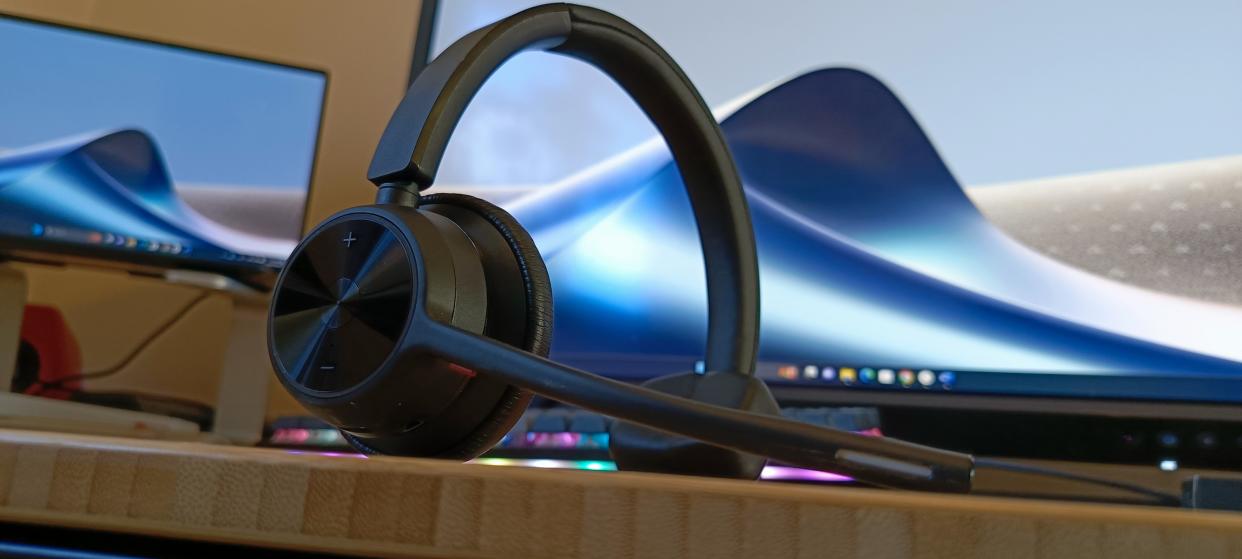
The Poly Voyager 4310 UC headset has a singular purpose, and one that's obvious from the moment I first laid eyes on it: telephony.
Now, as a single-ear headset, this won't compete for a place among the best noise-cancelling headphones or best gaming headsets out there, but as we on Creative Bloq know that creators have to communicate a lot via phone and video calls, we wanted to test this set (alongside two other new Poly headsets, the Voyager 8200 and the Focus 2) to see how it could fit into a creative's life.
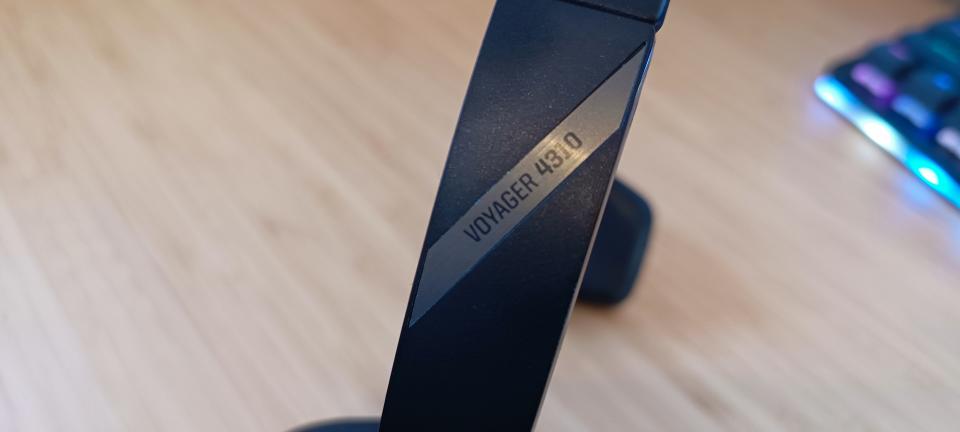
Poly Voyager 4310 UC review: Key specifications
Poly Voyager 4310 UC review: Design and build
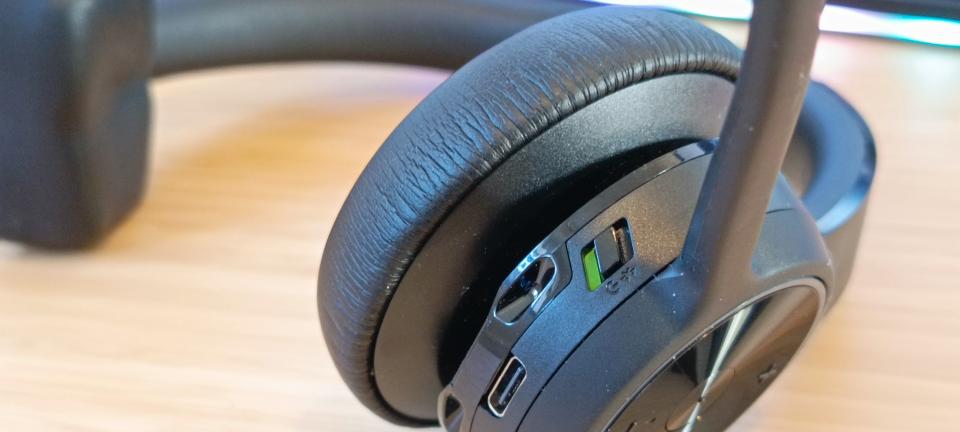
The Poly Voyager 4310 UC is not a set of headphones with built-in mics or a mic wand, in case you're someone who likes to use headphones primarily to listen to music but also need to take frequent video and phone calls. Instead, it's a more classic (throwback, even) single-ear construction, with an ear cushion on one side to listen through, a mic wand on that same side, and a simple padded headband cushion on the other.
As such, it's mostly made for customer service professionals, receptionists and others who need to juggle telephony with regular interaction with their surrounding environment.
The speaker earpad is pretty much identical to the ones on the Focus 2 headset, a soft faux-leather on-ear cushion with a thin mic wand that can rotate up or down, while there's a support cushion on the other end of the headband, amply padded with soft faux leather too.
It's very lightweight, only 122 grams, and while there's plenty of flex in the padded headband, it feels sturdy on your head, and I noticed no sliding or fear of it slipping off while walking around with it. The padded support piece on the off-ear side is comfortable too, and I experience little to no long-term discomfort from wearing it, although having sound just coming out of one ear did feel quite weird at first.
Poly Voyager 4310 UC review: Features and performance
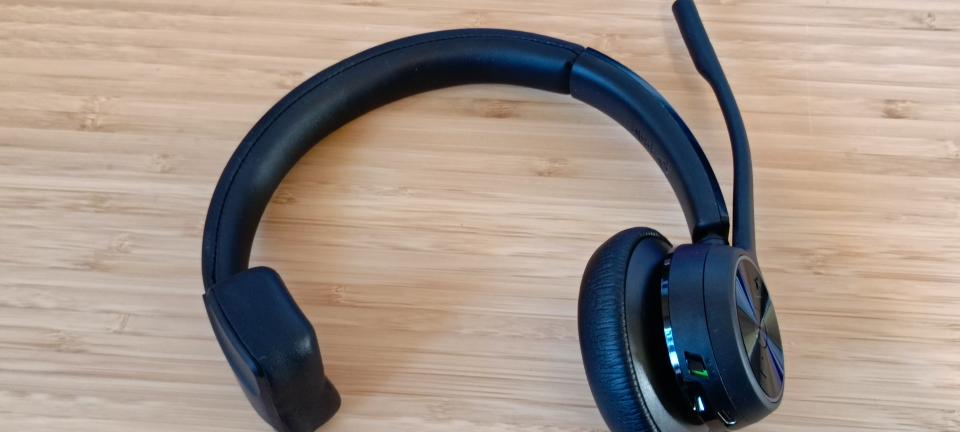
As expected by the reduced number of earpads, the features offering is stripped back somewhat here compared to the Focus 2 or Voyager 8200.
First of all, there's no noise-cancellation tech here, as that would defeat the purpose of the headset (and as one ear is completely exposed, it's also impossible). Listening to music also takes a backseat to communication functions, with the on-ear pad, while identical to the ones on the Focus 2 set, optimised for the spoken word over music fidelity (although music does sound very decent through that one earpad). The sound driver is optimised for PC wideband voice telephony up to 7 kHz or for multimedia 20 Hz to 20 kHz, which is notably less than the range for most music-focused headphones, which can reach up to 40kHz.
Another thing that marks this out as a set made for telephony pros is the reception range, which far outdoes the usual spec of 10 metres, with the headset staying connected up to 50 metres away from the computer or phone it's linked up to. While I didn't test the extreme limits of this claim, I ventured out into the far side of my garden and out beyond the corner of my little cul-de-sac with the set on, and it stayed duly connected to my laptop sitting in my upstairs home office, and it never lagged or disconnected during that experiment. You can plug them in, too, but the wireless function with the extended range is the big selling point here.
Sound from voice and video calls is picked up clearly by the earpad and I didn't get any complaints about echo or other issues from my voice going the other way.
Pairing is easy, via an identical process of pushing up the little switch on the headset that makes it discoverable to nearby devices, and after the first pairing, it connected near-instantly to the paired devices whenever I switched it on.
The stated battery life is 24 hours of talk time, but that requires turning the online indicator off, which is switched on by default. With it on, the claim goes down to 18 hours, and after going through a whole workweek of regular video and phone calls (an estimate of about 12 and a half hours) using the set without a low-battery warning ever going off, I can report it comes close enough for any practical purposes.
Poly Voyager 4310 UC review: Price
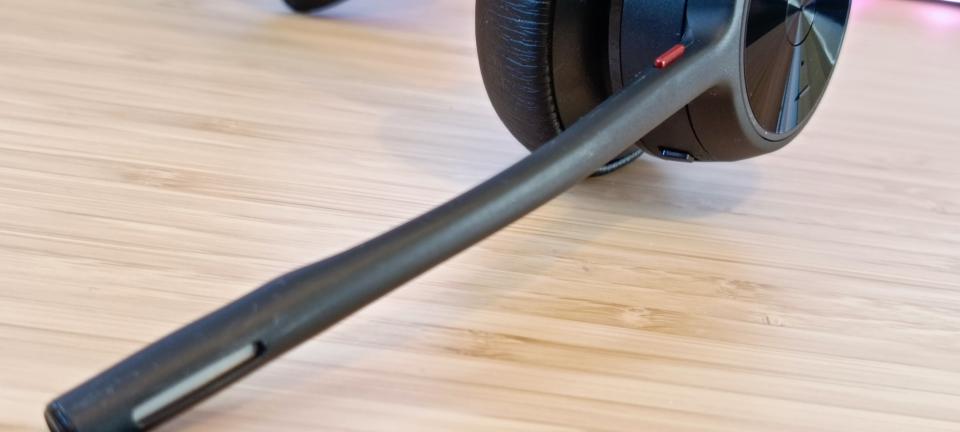
And now for the bad(ish) news: The Poly Voyager 4310 UC will set you back around £/$150, which is a lot of money for a single-ear telephony headset. This marks it out as squarely a demanding-professionals-only product (preferably bought on company budget). There are discounts to look out for, but I haven't seen it drop below £/$100, not yet at least...
Should I buy the Poly Voyager 4310 UC?
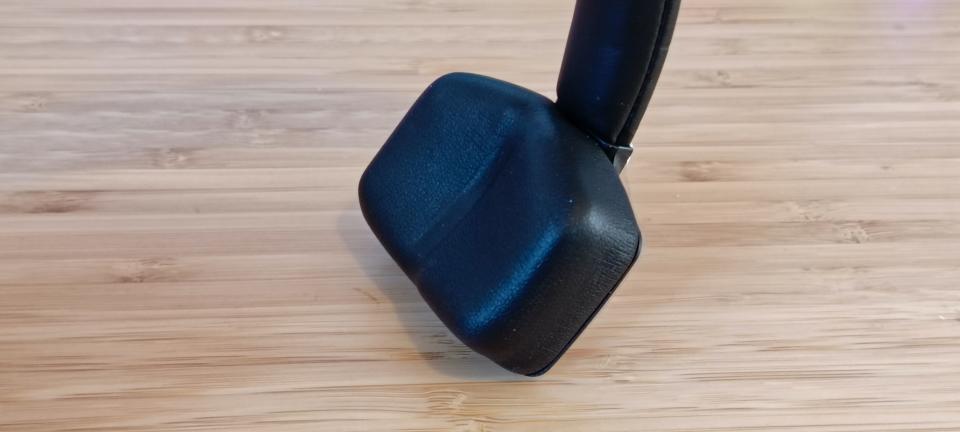
If you need a single-ear headset to serve near-constant telephony duties while being able to hear and communicate with the environment around you at the same time, and if money is little object, then the Poly Voyager 4310 UC will be a tempting, high-quality prospect. It's probably overkill, budget-wise, for a home or hybrid-working freelancer or someone who doesn't need constant focus on voice and video calls, but executive and pro users will find it comfortable to wear and solid in quality, even better if they don't have to pay for it themselves...

